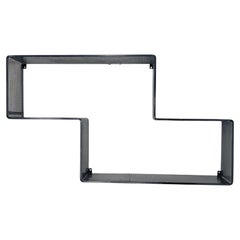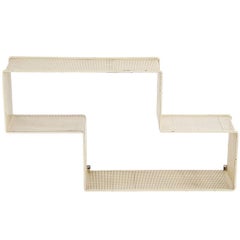Dedal Shelf
Recent Sales
Vintage 1950s French Mid-Century Modern Shelves
Sheet Metal
Vintage 1950s French Mid-Century Modern Shelves and Wall Cabinets
Steel
Vintage 1950s French Mid-Century Modern Shelves and Wall Cabinets
Steel
Vintage 1950s French Mid-Century Modern Shelves and Wall Cabinets
Steel
Vintage 1950s French Mid-Century Modern Shelves and Wall Cabinets
Steel
Vintage 1950s French Mid-Century Modern Shelves
Vintage 1950s French Mid-Century Modern Shelves and Wall Cabinets
Metal
Vintage 1950s French Shelves
Metal
Mid-20th Century French Mid-Century Modern Shelves
Steel
Mid-20th Century French Mid-Century Modern Shelves
Metal, Steel
Vintage 1950s French Mid-Century Modern Shelves
Metal
Vintage 1950s French Mid-Century Modern Shelves
Steel
Vintage 1950s French Mid-Century Modern Wall-mounted Sculptures
Metal
Vintage 1950s French Mid-Century Modern Wall-mounted Sculptures
Metal
Vintage 1950s French Shelves
Metal
Vintage 1950s French Mid-Century Modern Shelves
Iron
Vintage 1950s French Mid-Century Modern Shelves and Wall Cabinets
Metal
Vintage 1950s French Mid-Century Modern Shelves and Wall Cabinets
Steel
Dedal Shelf For Sale on 1stDibs
How Much is a Dedal Shelf?
Mathieu Matégot for sale on 1stDibs
With their curvaceous metal surfaces and shapes often resembling sheets of folded paper, Mathieu Matégot's inspiring furniture and lighting designs are easily recognizable and highly sought after by collectors. By working with perforated sheet metal and metal tubing, the Hungarian-born French architect, artist and designer — who is known by aficionados for his “rigitulle” technique — created tables, chairs and decorative objects that are celebrated works of French modernism and make a statement in any interior.
Matégot attended the Budapest School of Fine Arts and Architecture. He graduated in 1929 and traveled before settling in Paris in 1931, where he worked as a window dresser for department stores and as a set designer for cabaret halls.
In 1939, Matégot joined the French army in resistance to invading Nazi forces. He was soon captured and sent to work in a German factory. It was at this factory where Matégot became familiar with the materials and techniques that would inform and inspire his trademark rigitulle method.
After the war ended, Matégot opened a workshop in Paris and began to create handcrafted furniture that didn't conform to established styles of the time. Matégot explored merging traditional and non-traditional materials — he worked with formica, glass and natural materials such as rattan — and engaged in other forward-looking experiments. Matégot soon patented his career-defining rigitulle technique and material, which saw the designer working with metal tubing and perforated metal sheets and producing thin, airy folds into the metal as if he were manipulating fabric or paper.
Many of Matégot’s designs for table lamps, pendants, tables and more are reflective of the rigitulle technique, but the best-known work that exemplifies this process is his elegant three-legged Nagasaki chair, which he exhibited in 1954 at the Salon des Artistes Décorateurs. The original Nagasaki chair gave way to a collection that included a stool and an armchair. Matégot’s Nagasaki dining chair has been reissued by Gubi and is part of the permanent collection at the Vitra Design Museum, which is home to one of the world’s most important furniture collections.
Matégot created a range of smaller items for the home — serveware, side tables and magazine racks, each distinctive in their fluid and organic forms — but halted his career in design and moved to Angers in the early 1960s in order to turn to creating art. Today he is known for his abstract tapestries as well as his furnishings.
Find vintage Mathieu Matégot furniture on 1stDibs.
A Close Look at Mid-century-modern Furniture
Organically shaped, clean-lined and elegantly simple are three terms that well describe vintage mid-century modern furniture. The style, which emerged primarily in the years following World War II, is characterized by pieces that were conceived and made in an energetic, optimistic spirit by creators who believed that good design was an essential part of good living.
ORIGINS OF MID-CENTURY MODERN FURNITURE DESIGN
- Emerged during the mid-20th century
- Informed by European modernism, Bauhaus, International style, Scandinavian modernism and Frank Lloyd Wright’s architecture
- A heyday of innovation in postwar America
- Experimentation with new ideas, new materials and new forms flourished in Scandinavia, Italy, the former Czechoslovakia and elsewhere in Europe
CHARACTERISTICS OF MID-CENTURY MODERN FURNITURE DESIGN
- Simplicity, organic forms, clean lines
- A blend of neutral and bold Pop art colors
- Use of natural and man-made materials — alluring woods such as teak, rosewood and oak; steel, fiberglass and molded plywood
- Light-filled spaces with colorful upholstery
- Glass walls and an emphasis on the outdoors
- Promotion of functionality
MID-CENTURY MODERN FURNITURE DESIGNERS TO KNOW
- Charles and Ray Eames
- Eero Saarinen
- Milo Baughman
- Florence Knoll
- Harry Bertoia
- Isamu Noguchi
- George Nelson
- Danish modernists Hans Wegner and Arne Jacobsen, whose emphasis on natural materials and craftsmanship influenced American designers and vice versa
ICONIC MID-CENTURY MODERN FURNITURE DESIGNS
- Eames lounge chair
- Nelson daybed
- Florence Knoll sofa
- Egg chair
- Womb chair
- Noguchi coffee table
- Barcelona chair
VINTAGE MID-CENTURY MODERN FURNITURE ON 1STDIBS
The mid-century modern era saw leagues of postwar American architects and designers animated by new ideas and new technology. The lean, functionalist International-style architecture of Le Corbusier and Bauhaus eminences Ludwig Mies van der Rohe and Walter Gropius had been promoted in the United States during the 1930s by Philip Johnson and others. New building techniques, such as “post-and-beam” construction, allowed the International-style schemes to be realized on a small scale in open-plan houses with long walls of glass.
Materials developed for wartime use became available for domestic goods and were incorporated into mid-century modern furniture designs. Charles and Ray Eames and Eero Saarinen, who had experimented extensively with molded plywood, eagerly embraced fiberglass for pieces such as the La Chaise and the Womb chair, respectively.
Architect, writer and designer George Nelson created with his team shades for the Bubble lamp using a new translucent polymer skin and, as design director at Herman Miller, recruited the Eameses, Alexander Girard and others for projects at the legendary Michigan furniture manufacturer.
Harry Bertoia and Isamu Noguchi devised chairs and tables built of wire mesh and wire struts. Materials were repurposed too: The Danish-born designer Jens Risom created a line of chairs using surplus parachute straps for webbed seats and backrests.
The Risom lounge chair was among the first pieces of furniture commissioned and produced by celebrated manufacturer Knoll, a chief influencer in the rise of modern design in the United States, thanks to the work of Florence Knoll, the pioneering architect and designer who made the firm a leader in its field. The seating that Knoll created for office spaces — as well as pieces designed by Florence initially for commercial clients — soon became desirable for the home.
As the demand for casual, uncluttered furnishings grew, more mid-century furniture designers caught the spirit.
Classically oriented creators such as Edward Wormley, house designer for Dunbar Inc., offered such pieces as the sinuous Listen to Me chaise; the British expatriate T.H. Robsjohn-Gibbings switched gears, creating items such as the tiered, biomorphic Mesa table. There were Young Turks such as Paul McCobb, who designed holistic groups of sleek, blond wood furniture, and Milo Baughman, who espoused a West Coast aesthetic in minimalist teak dining tables and lushly upholstered chairs and sofas with angular steel frames.
Generations turn over, and mid-century modern remains arguably the most popular style going. As the collection of vintage mid-century modern chairs, dressers, coffee tables and other furniture for the living room, dining room, bedroom and elsewhere on 1stDibs demonstrates, this period saw one of the most delightful and dramatic flowerings of creativity in design history.

